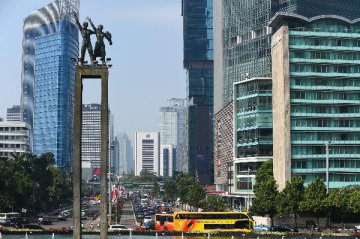
Reforms to increase productivity on the basis of better innovation, caution and infrastructure can help developing countries in Asia and the Pacific graduate to high-income status, the Asian Development Bank (ADB) said in a report released on Thursday.
Asian Development Outlook 2017, the ADB's annual economic publication, said rapid growth has lifted most economies in developing Asia to middle income level and the biggest challenge facing the region now is how a largely middle-income region can build on its past successes and jump to high-income level.
"Global experience suggests that the jump to high income can be difficult," ADB chief economist Yasuyuki Sawada said, "Past development success in Asia and the Pacific means most citizens in the region live in a middle-income country."
He said policy makers need to change their approach to reach high income. "It is no longer a question of them using more resources to sustain growth, economies must become more productive to clear the final hurdle," he said.
The report notes in 1991 only 10 percent of the population in Asia and the Pacific lived in middle-income economies. By 2015, this has increased to over 95 percent of the region's population, fuels by growth in the region's most populous countries: China, India and Indonesia. To raise productivity, countries in developing Asia will need to focus on innovation.
"Middle-income countries that successfully moved up to high income have more than two and half times as much stock of accumulated research and development as other middle income countries."
Innovation requires a skilled workforce, and hence an emphasis on improving education quality.
The report estimated that a 20 percent increase in human capital spending per capita can increase labor productivity by up to 3.1 percent. Sound educational policies can also promote equity and close the wide education gaps between developing Asia and high-income economies, while encouraging innovation and entrepreneurship.
Moreover, it said that infrastructure investment, particularly in energy and information and communications technology, can contribute to innovation and human capital, and thus sustaining growth in middle-income countries.
A one-time public investment in infrastructure equal to 1 percent of gross domestic product can lift a country's output by as much as 1.2 percent in seven year, the report said.
Finally, it said the whole process must be underpinned by a supportive policy environment and a stable macroeconomic environment.






















Latest comments